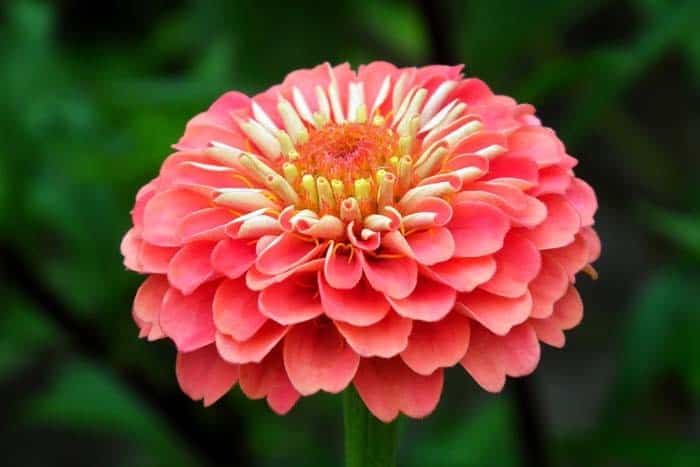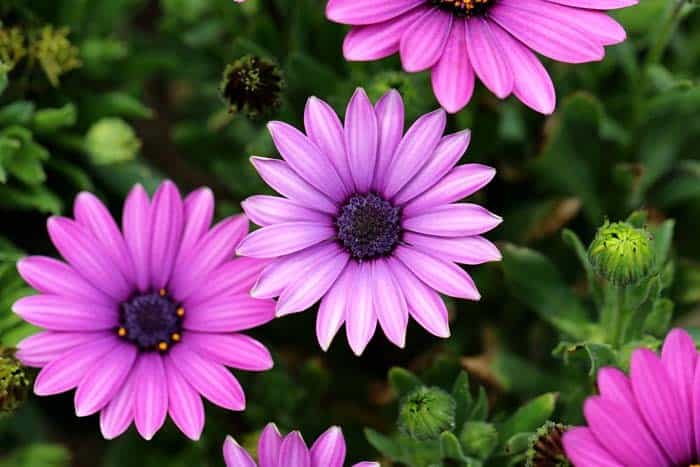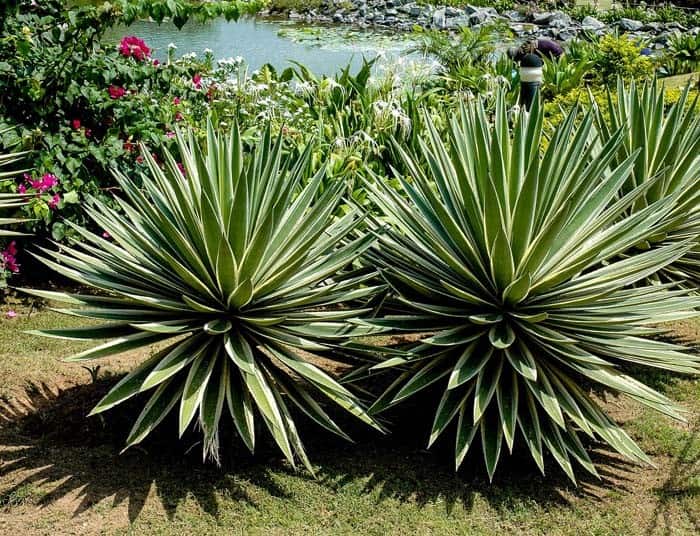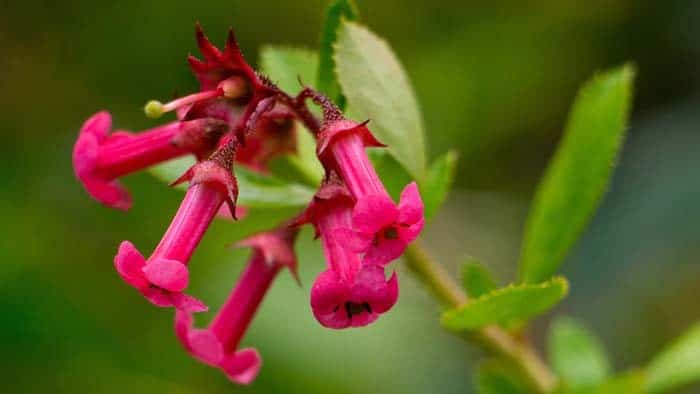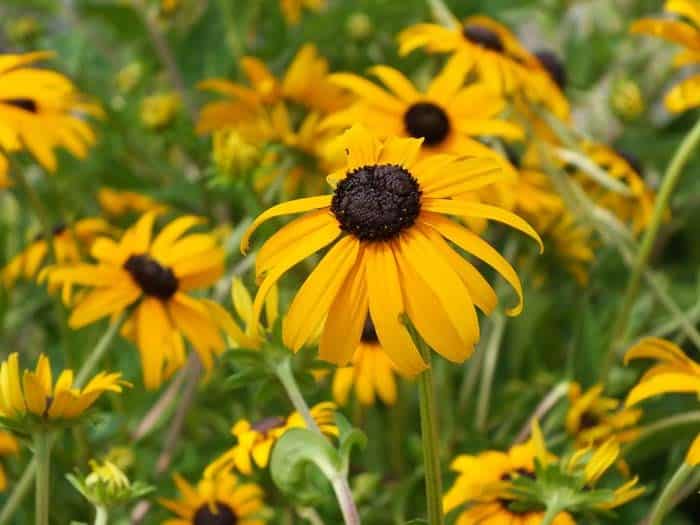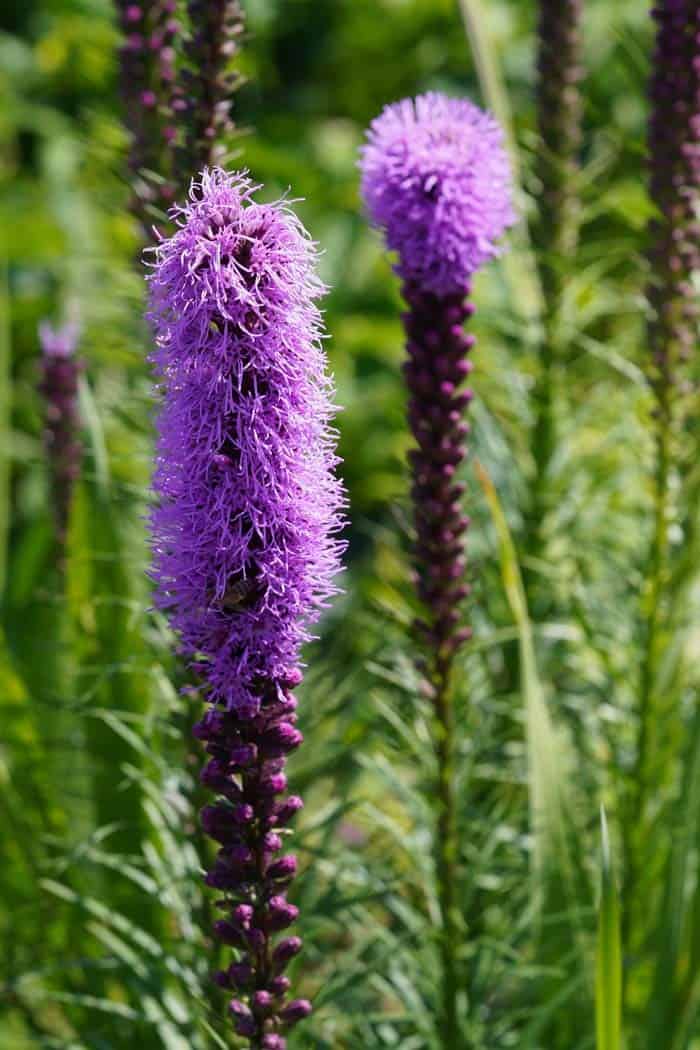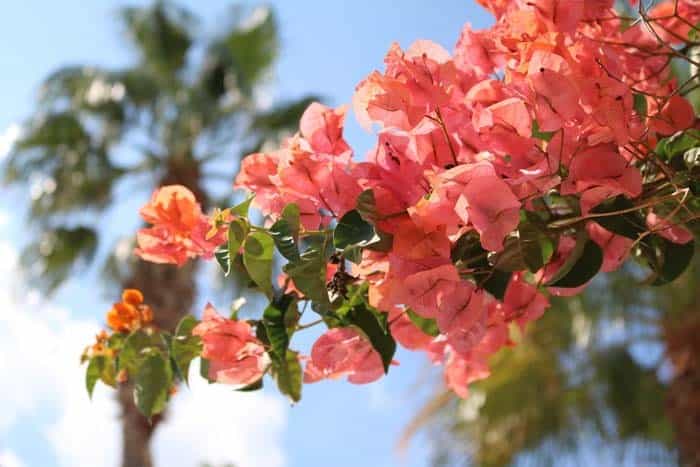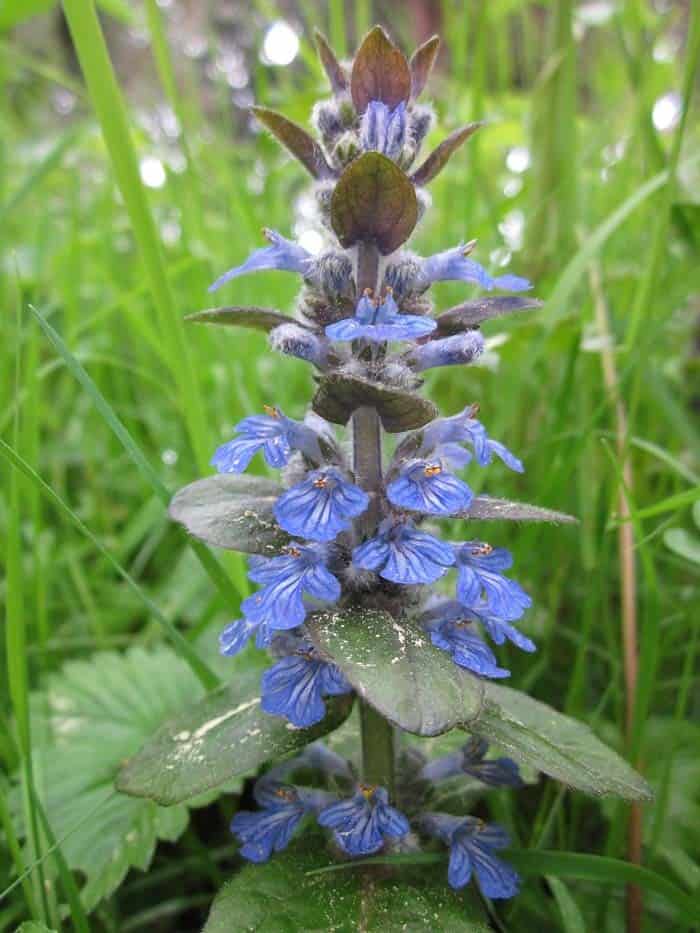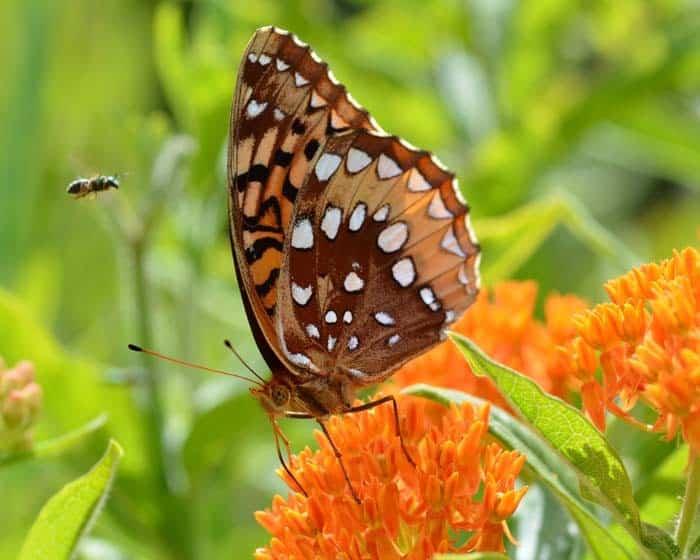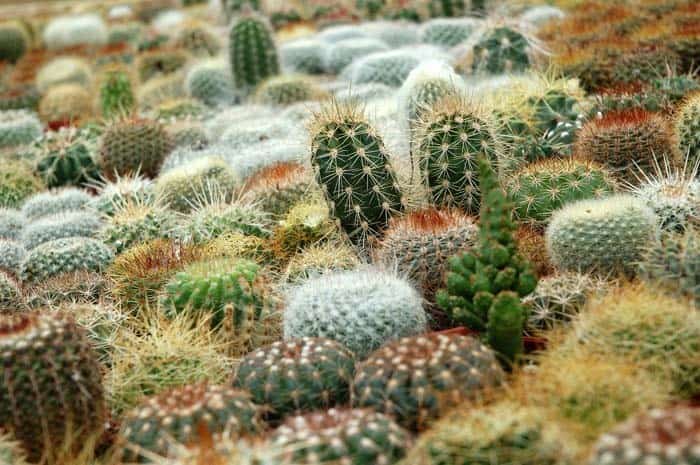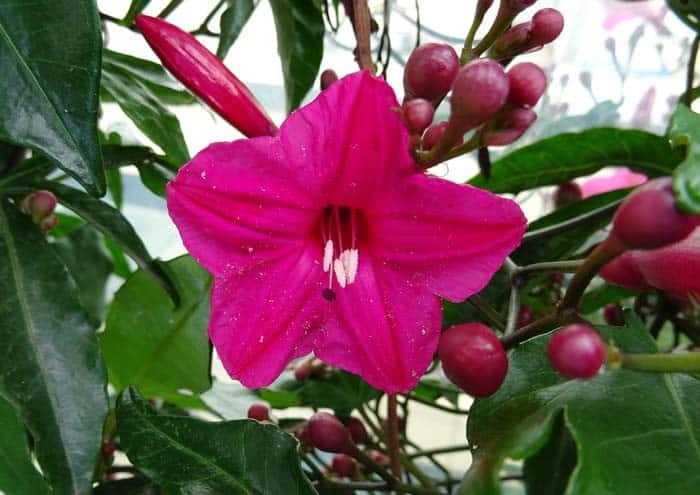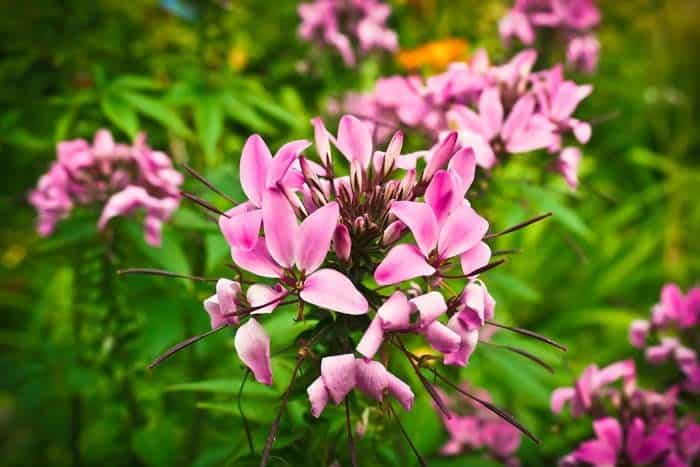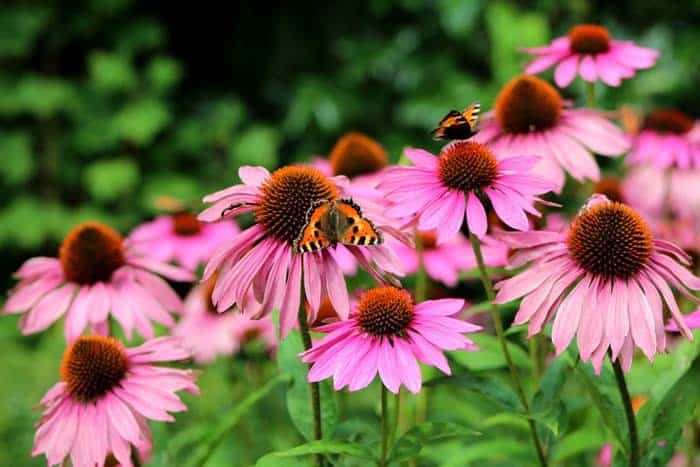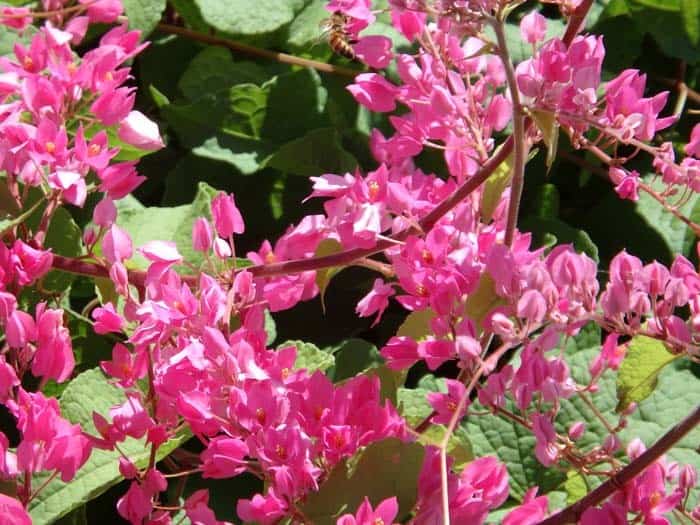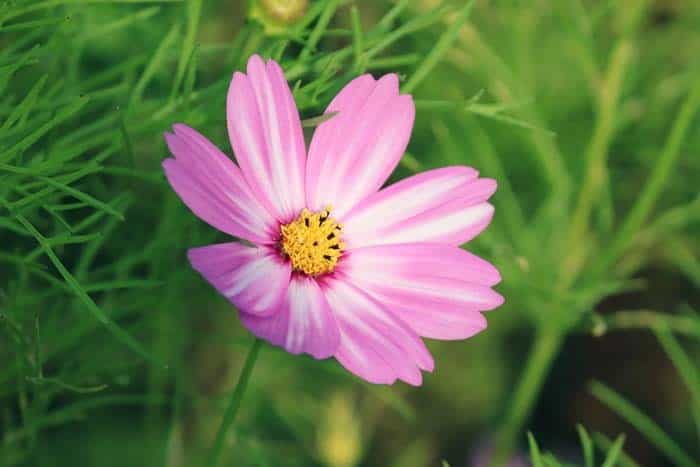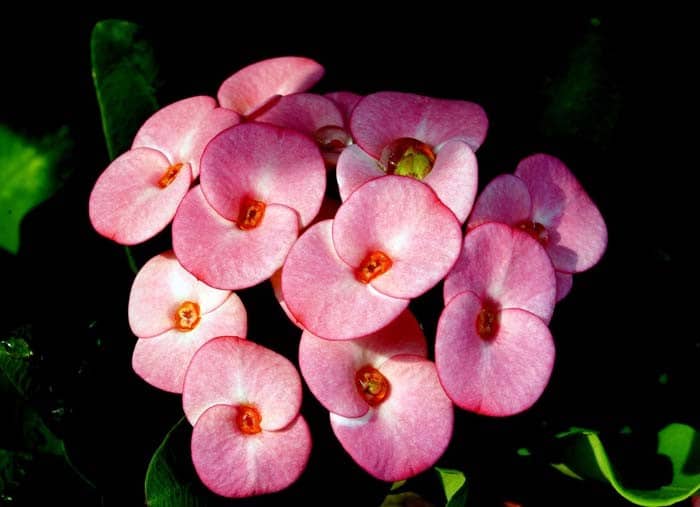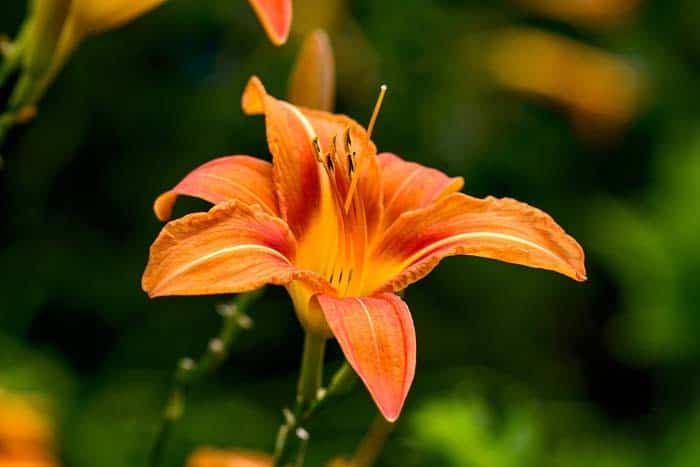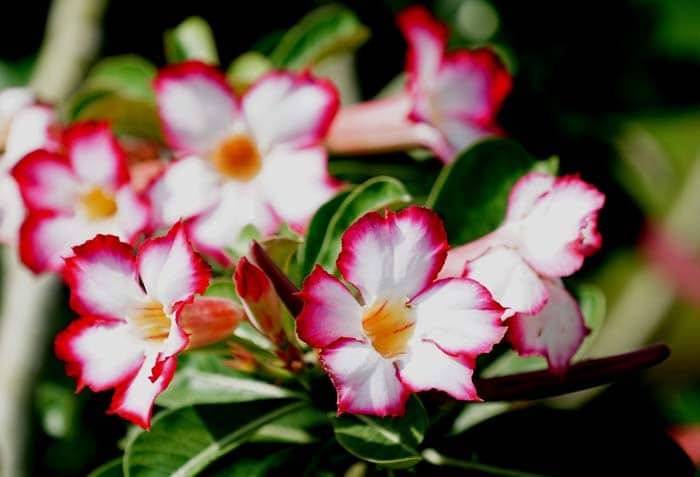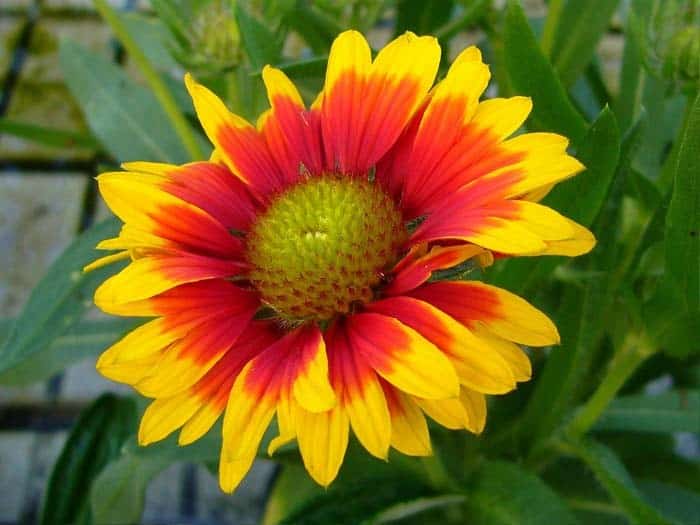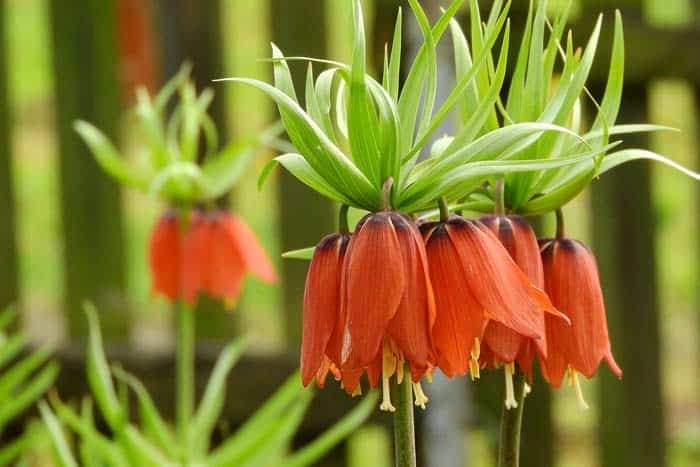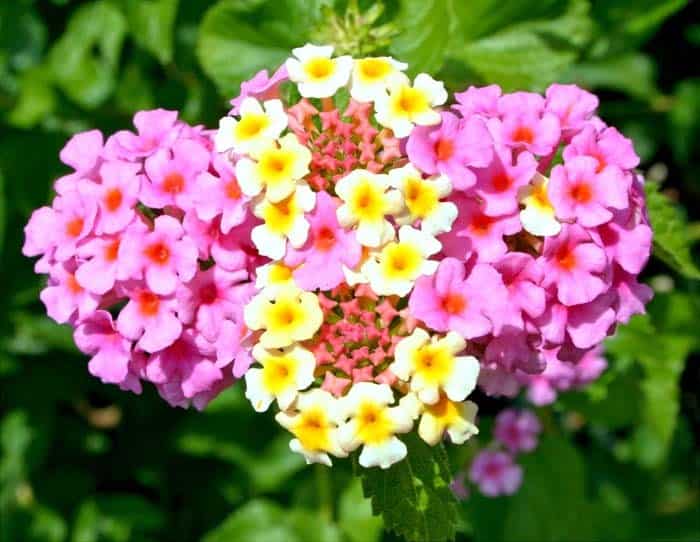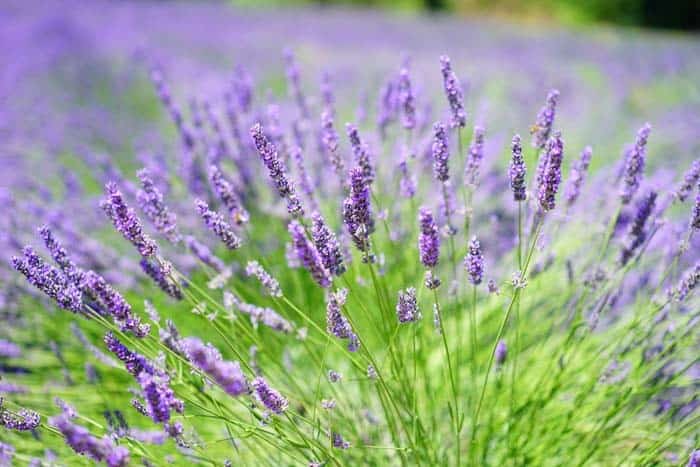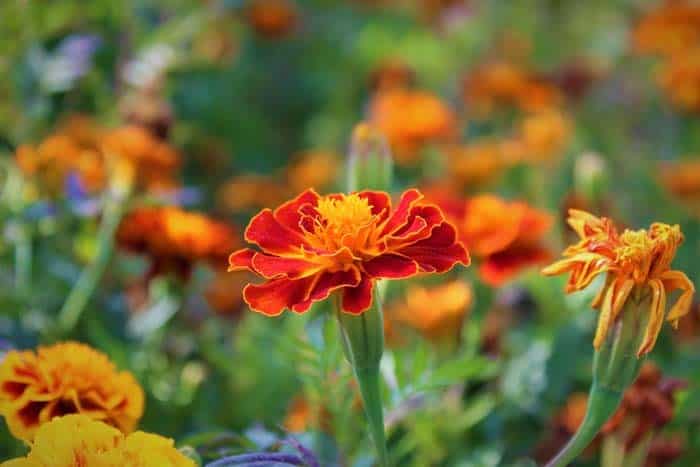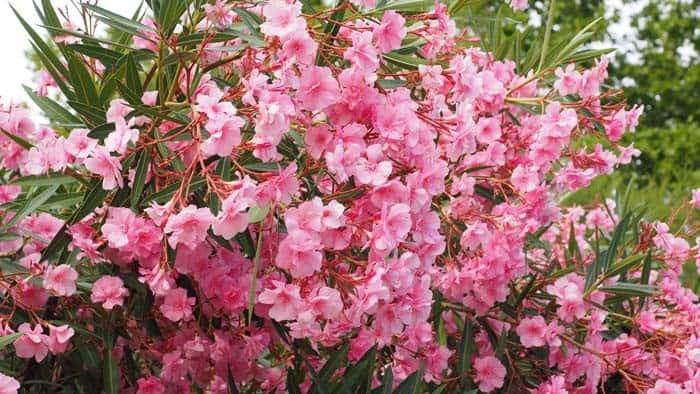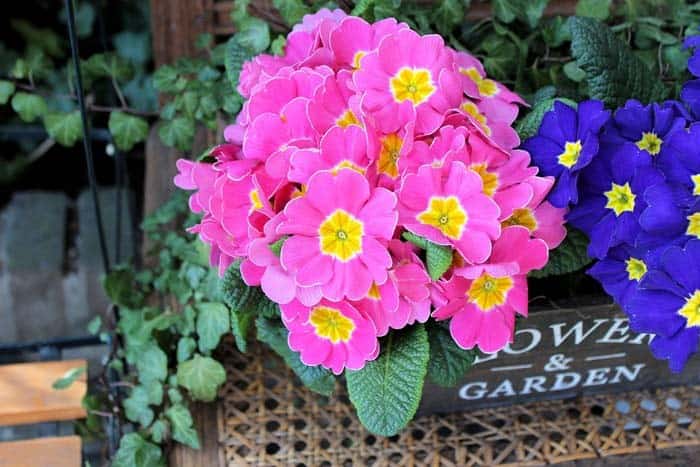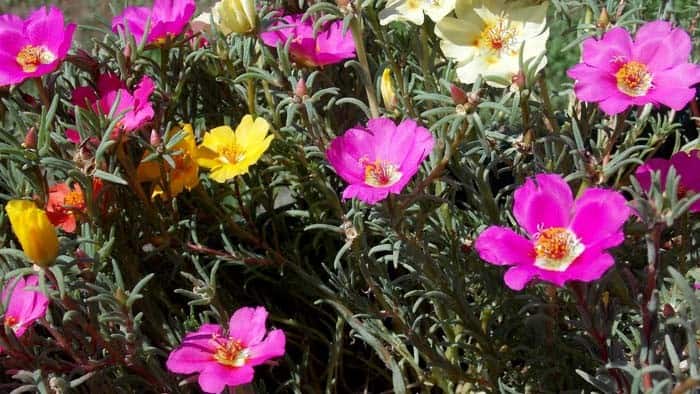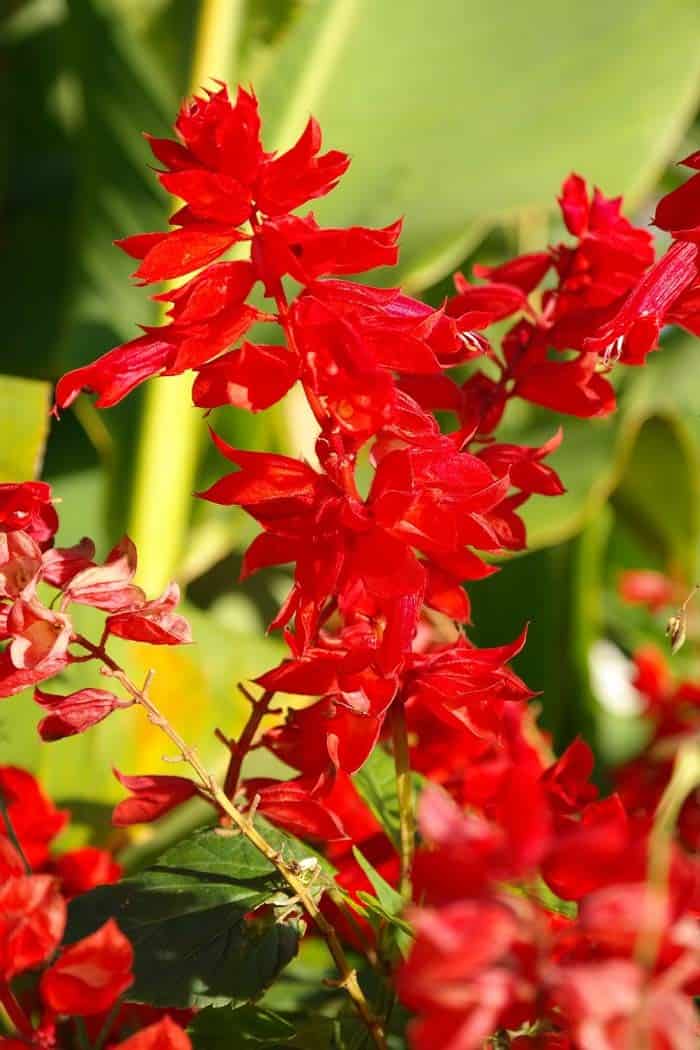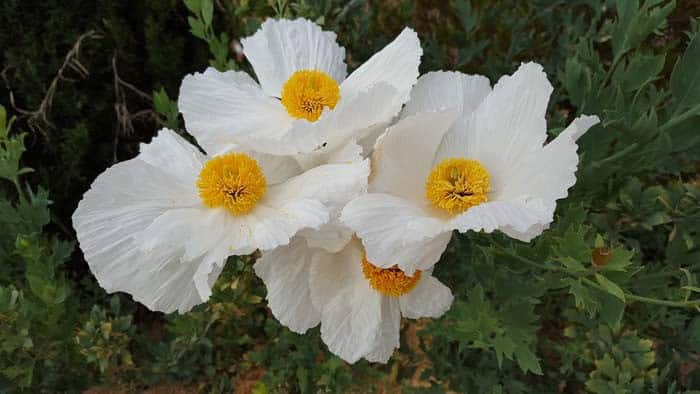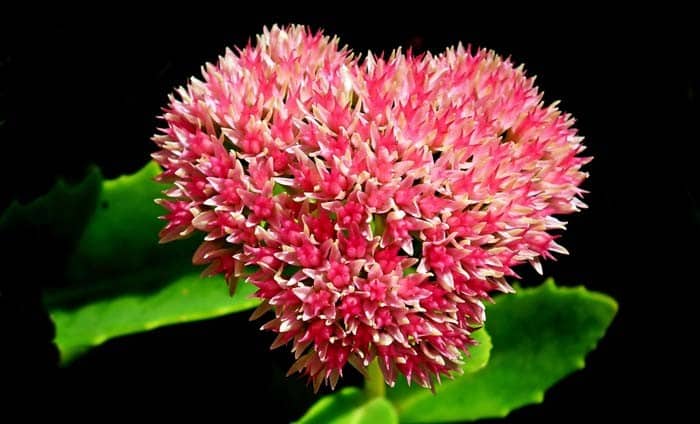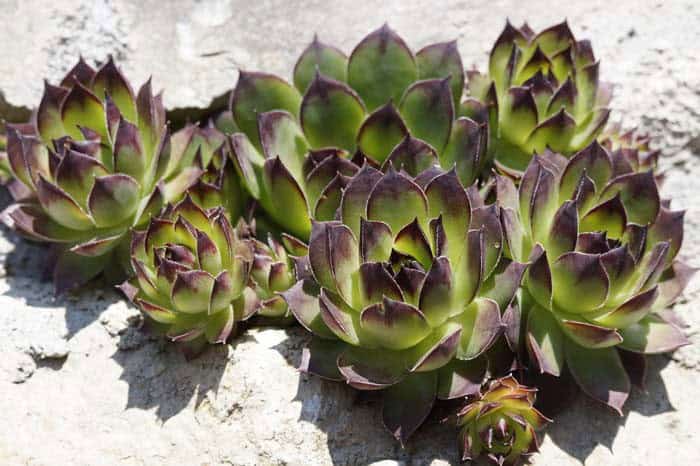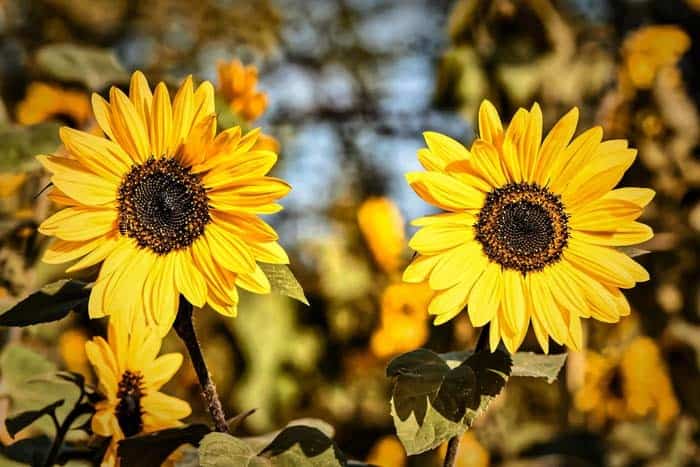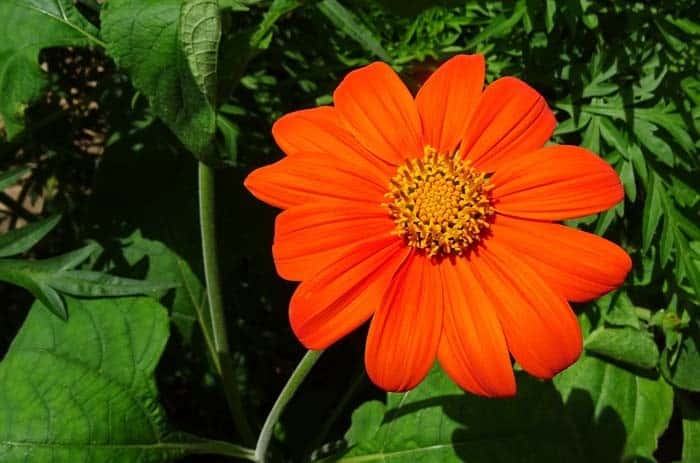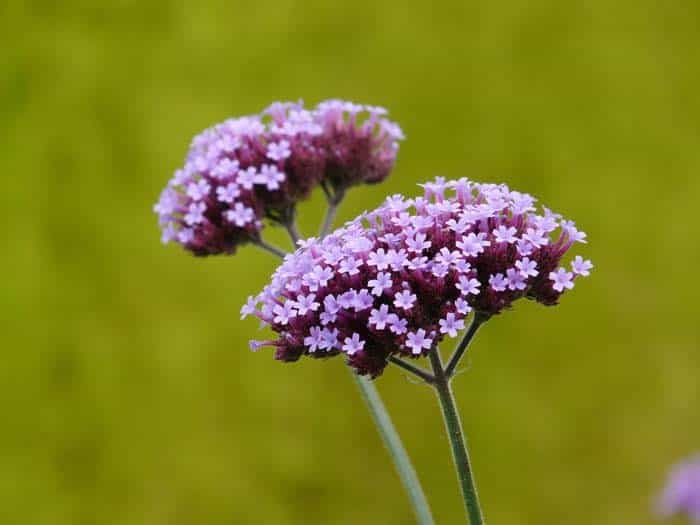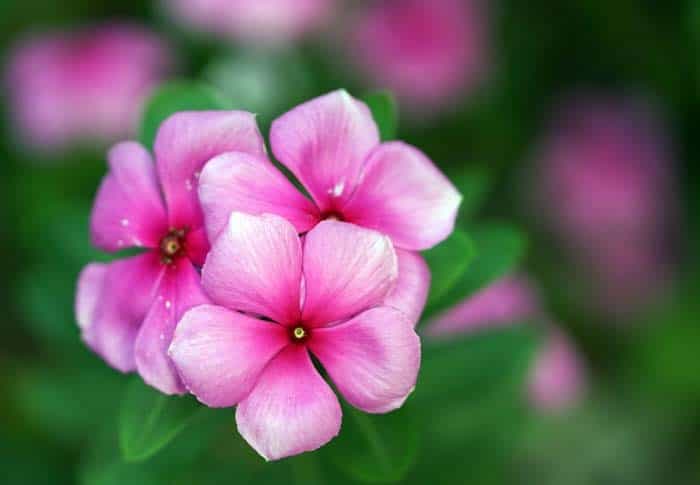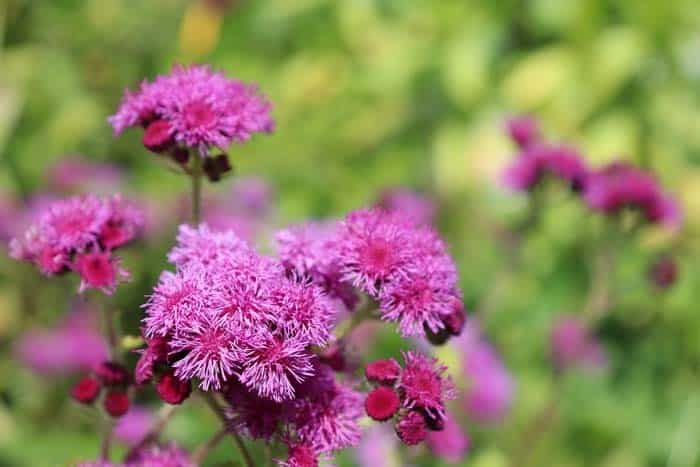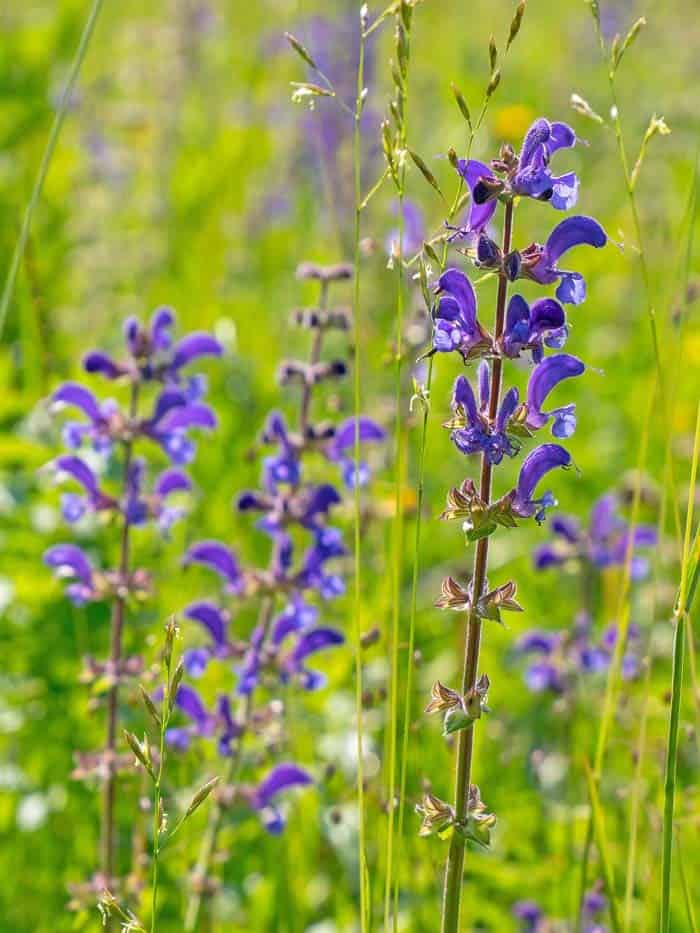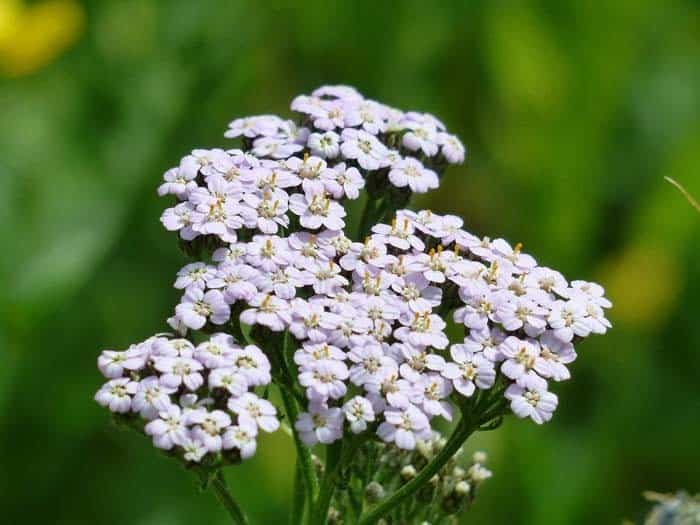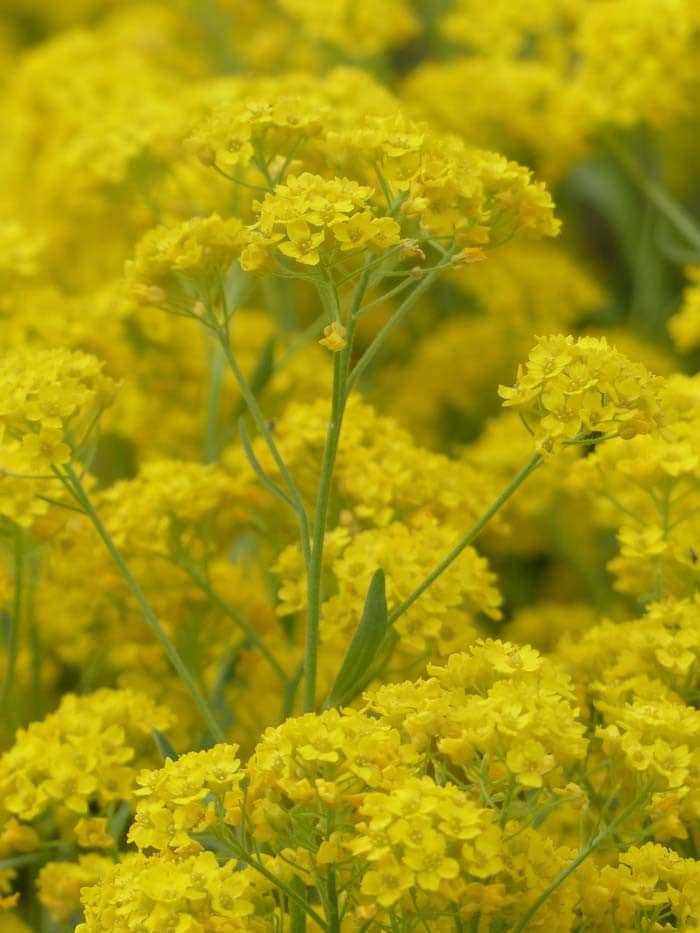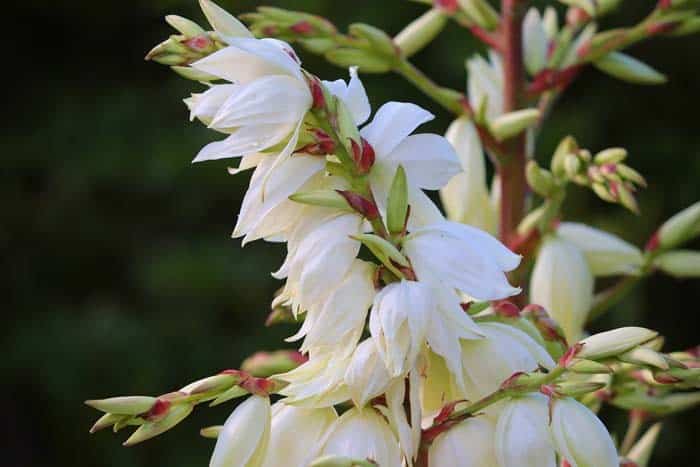For a vibrant flower garden with minimal upkeep, consider incorporating drought-tolerant plants. These hardy specimens can thrive even in dry conditions, allowing you to enjoy their beauty without worrying about frequent watering. And if you think drought-resistant plants lack visual appeal, think again – there are over 40 stunning options that bring as much texture and color to the garden as their more high-maintenance counterparts.
African Daisy (Gerbera)
The African daisy may seem like an unusual addition to our list, but it’s a hardy plant that can thrive in your garden with minimal maintenance once it settles in. Gardeners affectionately refer to this stage as the ‘survival mode’ due to its ability to adapt and flourish without much care. Once established, you can expect vibrant blooms to appear every two months, showcasing the plant’s impressive growth rate.
Agave
The Agave is an excellent choice for transforming large, empty spaces or adding a unique texture to rock gardens. Its versatility also makes it perfect for decorative arrangements around water features or edging walkways. As one of the most commonly used drought-resistant plants in yard landscaping, the Agave’s tall blooms are a stunning reward for the patient. With its impressive display, you’ll be glad you waited.
Beardtongues (Penstemon)
Penstemon is truly a standout among native plants. Its ability to thrive in mountainous regions with moderate temperatures showcases its remarkable hardiness. When cultivated in a backyard setting, it produces an abundance of vibrant magenta flowers, densely packed along a tall stem. What’s more, this unassuming perennial requires little maintenance, tolerating poor soil and infrequent watering – making it an excellent choice for busy gardeners or those new to horticulture.
Black-eyed Susans
Native to North America, the Black-eyeds Susan is one of the most ubiquitous wildflowers, frequently adorning vast open fields with its vibrant golden-yellow petals. Its widespread presence only serves to fuel the desire to cultivate this resilient perennial in one’s own garden, where it can thrive under the warm rays of the sun, despite being surprisingly drought-resistant.
Blazing Stars (Ajuga)
The Blazing star’s hardiness originates from its native prairie environment, where it adapts to moderate water levels. Given this adaptation, it’s logical that the plant thrives in low-maintenance gardens as well. This herbaceous perennial produces a vibrant display of fuzzy florets throughout the summer months, with purple and white hues reminiscent of bottlebrushes.
Bougainvillea
Bougainvillea, an ornamental plant originating from the Mediterranean region, thrives in warm climates. Its impressive ability to withstand drought makes it an ideal choice for dry landscape gardens, where it can add vibrant interest with its long, thorny branches and heart-shaped leaves. While this perennial is naturally resistant to drought, it still appreciates basking in sunlight, so consider placing it in a sunny spot to enjoy its attractive shapes and colors at their best.
Bugleweed (Ajuga)
Bugleweed, a perennial herbaceous plant, thrives as a ground cover in areas where lawns are challenging to maintain. Its vibrant spikes burst forth with stunning blue, violet, or purple hues, providing a visually striking display from mid-spring to early summer. One of its most appealing aspects is the rich, dark green foliage that complements the waterfall-like blooms perfectly. Notably, Bugleweed’s drought tolerance doesn’t deter it from spreading aggressively through underground runners.
As such, those seeking to contain its spread within a specific area must be mindful of its invasive nature.
Butterfly Weed (Asclepias Tuberosa)
The Asclepias tuberosa is a natural magnet for bees and butterflies, drawing them in with its vibrant color and nectar-rich blooms. This perennial plant has a remarkable ability to thrive in drought-prone soil, growing rapidly into a tall and statuesque specimen over the course of three years. It’s only when it reaches maturity, typically around year three, that you’ll be treated to clusters of bright orange or yellow flowers.
Cactus Plants
Among our top picks for drought-resistant plants, cacti stand out for their exceptional adaptability to dry conditions. But what makes them a natural fit for arid gardens is not only their impressive ability to thrive without water, but also the unique texture they bring to the landscape.
With shapes and colors that range from intriguing to striking, these thorny wonders add a touch of whimsy to any garden, making them an obvious choice for those looking to create a visually appealing oasis in arid environments.
Cardinal Climbers
The Cardinal Climber, an annual plant with a flair for flexibility, can be cultivated in various forms. It can be trained to climb up a trellis, spread as a ground cover, or even thrive in hanging baskets. Its vibrant cardinal red blooms are undeniably eye-catching and justify its name. While it can survive in dry soil conditions, the plant truly flourishes when watered regularly, once a week for optimal results.
Cleome
A staple in many English homes, the Cleome is a low-maintenance flower that thrives with its unique spider-like blooms appearing from early spring to late fall. This adaptable bush boasts an impressive growth rate and produces vibrant flowers in shades of pink, rose, purple, white, or bicolor, delighting gardeners with its colorful displays.
Coneflowers (Echinacea)
Echinacea plants are a type of native flora that play a crucial role in supporting local wildlife. Their striking purple blooms, which face directly upwards towards the sky, add a pop of color to any garden. When it comes to attracting dragonflies and controlling mosquitoes, Echinacea is an excellent choice. One thing to keep in mind when growing Echinacea is that they prefer well-drained soil and full sun. In fact, they thrive in spots that receive at least six hours of direct sunlight per day.
This means you should choose a location with good drainage to ensure your plants are happy and healthy.
Coral Vine (Mexican Creeper)
The Coral Vine, native to Mexico, flaunts its delicate pink or white flowers as a perennial bloomer. With its affinity for well-drained soils, it thrives when supported by a trellis, where it can meander and create a lush, natural screen.
As this ornamental plant blooms from spring to autumn, the fruit and seeds become a vital food source for an array of wild animals, highlighting the importance of its role in the ecosystem.
Cosmos Plants
This stunning plant, adorned with vibrant pink blooms, boasts an impressive ability to thrive independently. Without requiring any exceptional care, it can effortlessly tolerate poor soil conditions, making it a low-maintenance addition to any outdoor space. Not only will you be able to cultivate this beauty from seeds, but also attract a diverse array of wildlife to your yard.
During the warm summer months, expect frequent visits from birds, bees, and butterflies as they flock to your garden in search of sustenance and shelter.
Crown of Thorns (Euphorbia Milii)
Among our botanical treasures, one perennial plant stands out for its unique characteristics: the Crown of thorns. This bush-like specimen grows multiple branches as it reaches almost two meters tall, making it an impressive addition to any garden or landscape design. Some enthusiasts appreciate its ability to form natural barriers when planted alongside other plants, thanks to its abundant thorns.
Others enjoy its ornamental value as a decorative shrub that draws the eye with its vibrant blooms, featuring clusters of tiny petals in shades ranging from bright red and orange to warm yellow. While this plant thrives in well-draining conditions and prefers sunny spots, it’s worth noting that it’s not particularly fond of overwatering.
Daylily (Hemerocallis)
Daylilies, often mistaken as true lilies due to their flower shape, are actually perennials that thrive on simplicity. Without the need for elaborate maintenance, these charming blooms can flourish in a variety of conditions. The name Hemerocallis, which translates to ‘beauty for a day,’ is particularly apt, given the fleeting nature of most daylily flowers, which typically last only 24 hours.
In fact, their short-lived yet vibrant petals are often showcased in wedding bouquets and floral arrangements. With a sunny spot and minimal care requirements, daylilies can easily adapt to a wide range of soils and tolerate dry spells, making them an excellent choice for busy gardeners.
Desert Rose (Adenium Obesum)
The desert rose’s name provides an initial indication of its resilience in arid environments. This iconic flower is a staple in many xeriscapes, thriving under the harsh conditions of dry climates. Some garden enthusiasts even cultivate it as a bonsai tree, taking advantage of its succulent trunk and delicate foliage. However, it’s essential to note that this plant grows at a snail’s pace, making it a long-term commitment for any gardener considering adding it to their landscape.
When it does bloom, typically during the summer months, the desert rose produces vibrant pink and red flowers that add a pop of color to even the most desolate landscapes.
Indian Blanket Flowers (Gaillardia)
The Indian blanket flower thrives in arid environments, where its vibrant colors can be admired from summer to late fall. This wildflower’s affinity for hot and dry conditions makes it a popular choice among honeybees, which produce rich dark reddish amber honey. For gardeners looking to cultivate this beauty, simply plant seeds in well-draining soil. Once the blooms have faded, the plant stalks can be mowed, allowing the fallen seeds to germinate and grow anew the following year.
Kaiser’s Crown (Crown Imperial)
This drought-tolerant plant originates from Turkey, Iraq, and Iran. While it’s native to these regions, it’s also cultivated as an ornamental species in other parts of the world. The unique flower arrangement features downward-facing blooms at the top of the stem, surrounded by small leaves. This distinctive characteristic is where the plant gets its name. In its natural state, the wild species tends to produce orange flowers.
However, through cultivation, it’s possible to find varieties that showcase scarlet, orange, and yellow hues. The flowers typically bloom in late spring, accompanied by a pungent foxy scent that’s known to deter mice, moles, and other small animals.
Lantana Camara
Native to the American tropics, this plant is often overlooked for its unique characteristics. Its invasive nature and potential to disrupt biodiversity are significant concerns. However, with proper trimming, these issues can be mitigated. Meanwhile, the showy flowers that emerge from mid-summer to the first frost offer a kaleidoscope of colors, ranging from pink and white to vibrant hues like orange-red and purple, as well as striking mixed combinations.
Lavender (Lavandula)
As a versatile addition to any garden, lavender shines as an edging plant or ornamental feature in bed arrangements. Its striking lilac hue and intoxicating fragrance are simply extraordinary. This hardy perennial has earned its reputation for resilience against droughts, making it a favored choice for low-maintenance cultivation. Its value extends beyond aesthetics, too, as the oil extracted from lavender is highly prized for its unique properties.
Marigold
One of the most ubiquitous and versatile garden plants, Marigold is renowned for its vibrant orange blooms that burst forth during the summer months. Notably, it thrives in dry environments and possesses natural pest-repelling properties, making it an ideal companion to a range of crops, including tomatoes, eggplants, chili peppers, tobacco, and potatoes.
Oleander (Nerium Oleander)
The Oleander plant is a stunning, drought-tolerant species renowned for its toxicity. Its unique feature is the formation of clusters with blooms at the end of each branch, showcasing an array of colors including white, pink, and red. This Mediterranean native thrives in sunny environments, making it an ideal choice for gardeners seeking to add a touch of elegance to their outdoor spaces.
Primula
While the Primula plant may thrive in poor soil conditions, making it a drought-tolerant option for gardeners, its versatility also extends to its ability to be grown in pots or incorporated into a beautiful garden landscape. One of the primary draws of this popular plant is its early blooming phase, which provides a burst of color in the spring. Additionally, the Primula’s rich variety of colors, including [insert specific color palette], only adds to its appeal.
Purslane (Portulaca)
Purslane’s membership in the weed family stems from its remarkable ability to propagate quickly and tenaciously spread. While some gardeners view this trait as a blessing, allowing for effortless ground coverage without any upkeep, others may find it a curse, as it can be challenging to eradicate once established. When introducing Purslane into your garden, it’s essential to exercise caution by keeping it at a safe distance from vegetables and flower beds to prevent unwanted encroachment.
Red Salvia (Scarlet Sage)
Looking for a low-maintenance yet striking addition to your garden? The Red Salvia might just be the perfect choice! This vibrant plant, native to Brazil, is surprisingly easy to cultivate and can thrive in container gardens or as an edging plant in all zones. To get started, simply plant it in mid-spring when the weather warms up, allowing it to quickly reach maturity at around 30 inches tall.
One of its most unique features is its heart-shaped leaves, which not only add visual interest but also emit a natural fragrance that repels pests – a win-win for any gardener! With its robust growth and pest-repelling properties, the Red Salvia is an excellent option for those looking to add some color and charm to their outdoor space with minimal fuss.
Romneya (Matilija Poppies)
While the Romneya may share family ties with the poppy, its striking appearance is anything but conventional. The large white blooms are certainly eye-catching, but it’s the vibrant yellow stamens that truly steal the show. As attention-grabbing as these flowers may be, one thing to consider is their tenacity once established – this plant can be notoriously difficult to eradicate. When it comes to growing conditions, Romneya thrives in warm, sunny spaces with well-drained soil.
It’s a consideration worth keeping in mind when deciding whether to bring this bold beauty into your garden.
Stonecrops (Sedum)
Stonecrop, scientifically known as Sedum, is a succulent that has adapted to store water in its leaves, making it a drought-resistant species. As part of the succulent family, this trait allows Stonecrop to thrive in areas with infrequent rainfall. Once established, Stonecrop demands minimal maintenance. In fact, providing it receives rain every two weeks or so, you won’t need to supplement with additional watering.
Succulent Plants
While succulent plants have gained widespread popularity for their unique beauty and low-maintenance requirements, they also bring a touch of elegance to both indoor and outdoor spaces. With their diverse range of leaf shapes and forms, succulents add visual interest and texture to even the smallest of gardens or rock formations. Whether used to create miniature oases or complement existing landscaping, these versatile plants are sure to impress.
Sunflowers (Helianthus)
The allure of sunflowers lies in their ability to harness the power of the sun. These towering plants are capable of photosynthesizing and maturing as they tilt towards the warm rays, making them a joy to behold. As an added bonus, they possess some degree of drought tolerance, allowing for moderate watering when the top layer of soil feels dry.
While it’s true that this particular species can be quite invasive, this concern is easily mitigated by planting them in a spacious area of your backyard, where they can spread out freely without causing any issues.
Torch Tithonia
The Mexican sunflower, also known as Torch Tithonia, boasts striking orange blooms that are shaped like stars. These vibrant flowers emerge in mid-summer and persist through the fall season. What’s more, this sun-loving perennial is a magnet for hummingbirds, butterflies, and bees, who are drawn to its nectar-rich blooms.
One of the reasons it’s so popular among gardeners is the ease with which it can be grown and maintained – making it an ideal choice for those looking for a low-maintenance yet high-impact addition to their outdoor space.
Verbena (Vervain)
The Verbena, a perennial herb native to Europe, can thrive up to 30 inches tall and is often spotted in grass fields, meadows, and along roadsides. This versatile plant makes a great addition to any garden, whether it’s a cultivated plot or a container garden. It’s particularly well-suited for summer-blooming plants, adding a pop of color to hanging baskets or porches with its beautiful blooms.
Vinca (Periwinkle)
Vinca thrives in sunny spots with well-drained soil, where its summer blooms take on a lovely salve form and vibrant violet hue. As for care, this low-maintenance plant doesn’t demand much attention when planted directly into garden soil or containers. In fact, over-watering can be detrimental to the flower’s health, so it’s essential to check the top layer of soil before giving it a drink – only water if it feels dry to the touch.
Whiteweed (Ageratum)
The Ageratum’s charm lies in its soft, fluffy blooms which come in a palette of soothing colors such as lavender-blue, pink, lilac, and white. These beautiful flowers can be enjoyed from late spring until the first frost, making them an excellent addition to any garden or container arrangement.
When planting alongside other species, keep in mind that while Ageratum is known for its drought-resistance, it will still require occasional watering – ideally once a week during the hottest days of summer – to truly thrive.
Wild Sage
The succulent, a true champion of drought tolerance, can thrive in scorching hot weather with minimal watering. When looking to incorporate this hardy plant into your native garden, consider placing it near a sunny patio or window where it can bask in full sunlight and attract fluttering butterflies.
Yarrow (Achillea Millefolium)
The Yarrow thrives in environments with full sun exposure and soil that drains well, whereas overly moist conditions can be detrimental to its growth. In terms of maintenance, this hardy plant is remarkably low-maintenance, making it an ideal choice for applications such as borders, ground covers, or open native gardens. Moreover, the Yarrow’s leaves and stems have been traditionally used to create herbal teas or add flavor to various dishes, further solidifying its value as a valuable herb.
Yellow Alyssum (Stone Herb)
The perennial Stonecrop herb is a top choice for ground cover in dry soil conditions, making it an ideal selection for rock gardens too. This attractive plant produces clusters of small yellow flowers from April to May, boasting blue-grey leaves on its stems. While it’s a stunning addition to any garden, it’s worth noting that this drought-tolerant beauty has one drawback: its unpleasant odor.
Yucca
The Yucca plant has gained popularity in modern landscapes due to its unique appearance, characterized by sword-like leaves. Moreover, it’s an evergreen shrub that thrives with minimal maintenance requirements. One of the key aspects to consider when incorporating this striking landscape feature is pruning dead foliage in the spring to maintain a healthy and visually appealing appearance.
Zinnia
As Zinnia flowers reach maturity, watering is significantly reduced due to their natural drought tolerance. One of the standout features of these vibrant blooms is their striking color palette, which boasts an array of hues including fiery reds, sunshine yellows, warm oranges, and soft pinks. The ease with which Zinnias can be cultivated is also a major draw, particularly when starting from seeds.
With a preference for conditions ranging from light shade to full sun, these flowers are well-suited for a variety of environments.
